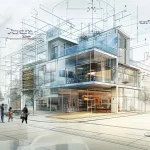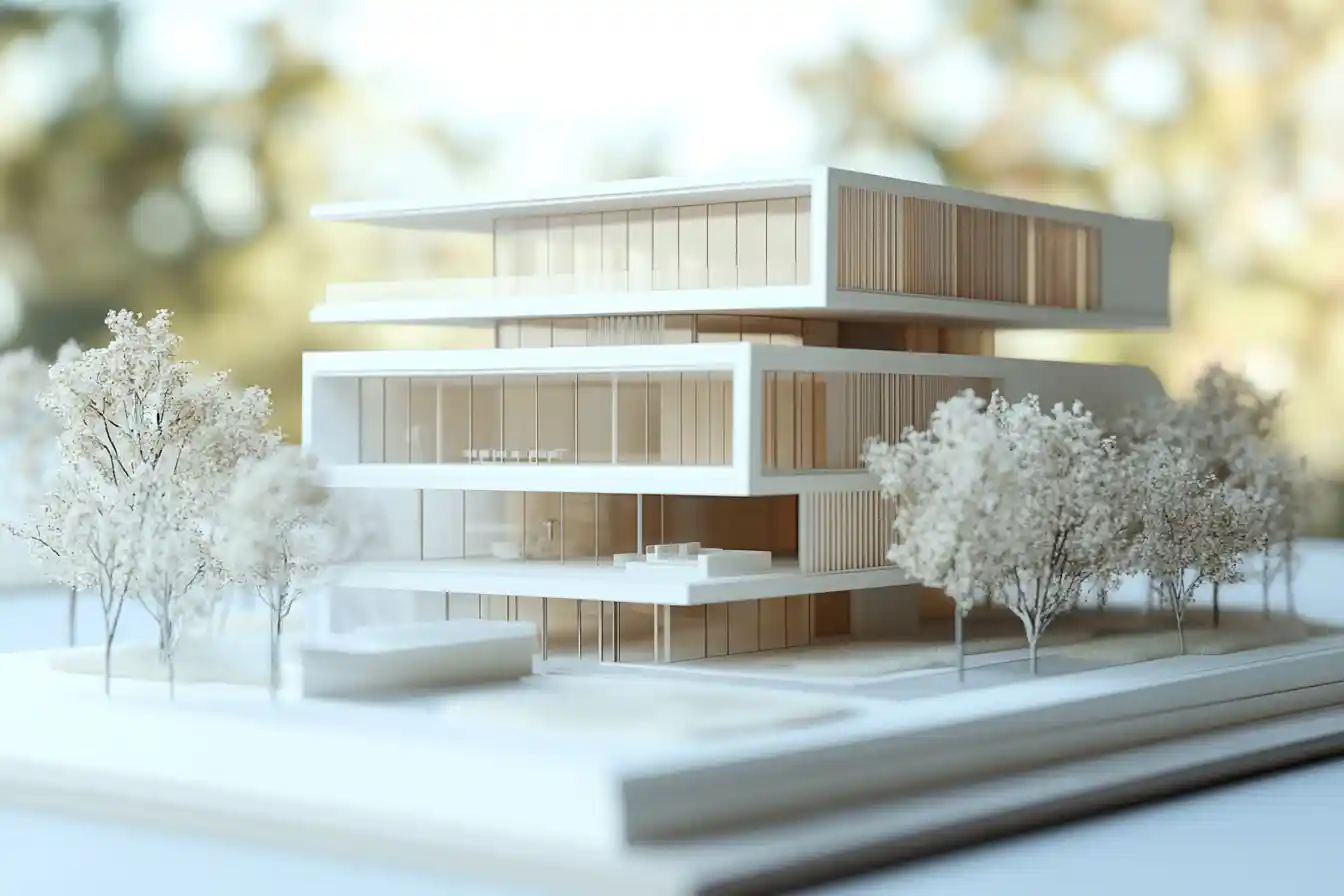Engaging your audience in architectural presentations can make the difference between a memorable pitch and a forgettable one. We know that effectively communicating complex design concepts requires more than just technical knowledge; it demands a strategic approach that captures and holds attention.
Our method, known as Engagement Architecture, integrates technology, internal processes, staff expertise, content, and outreach tactics into a cohesive strategy. By doing so, we ensure that our presentations not only convey our ideas clearly but also resonate deeply with our audience. In this article, we’ll explore how to leverage these elements to create impactful and engaging architectural presentations.

Understanding Your Audience
Tailoring Content to Viewer Interests and Knowledge
Engage your audience by tailoring your content to their interests and knowledge level. Determine what your audience cares about most. Understanding this helps craft a presentation that speaks directly to their needs. For example, when presenting to clients unfamiliar with technical jargon, use plain language and focus on the benefits and visual aspects of the project. Conversely, when addressing peers or specialists, include more detailed explanations and technical terms that they expect. Customizing content ensures relevance and keeps your audience engaged.
Anticipating Audience Questions
Preemptively addressing potential questions demonstrates your expertise and preparedness. Consider common concerns and questions your audience might have about the project. For instance, clients often wonder about the budget, timelines, and material choices. Prepare clear and concise answers supported by visuals or data. This approach not only builds trust but also keeps the presentation flowing smoothly. Execute this by rehearsing responses to anticipated questions, thus exuding confidence and enhancing the overall impact of your presentation.
By focusing on understanding your audience, presentations become more impactful and engaging, ultimately achieving the desired communication goals.

Designing Your Presentation
Structuring Content for Clarity and Impact
Organizing information logically helps maintain audience engagement. Begin with a clear introduction outlining the key points. Follow with specific sections that delve into your main ideas. For instance, start by describing the project’s overall concept, followed by detailed explanations of each phase. Ensure each section transitions smoothly to the next.
Using bullet points can segment information, but mix with other formats to keep interest. Highlight essential points using bold or underlined text. Short paragraphs enhance readability. Each slide should convey one core message to avoid overwhelming the audience.
Visual Aids and Their Effective Use
Effective visual aids are crucial in architectural presentations. Incorporate high-quality visuals like clear, high-resolution renderings, floor plans, elevations, sections, and diagrams. For instance, use 3D models or VR experiences to provide an immersive understanding of the project. Ensure that these aids are relevant and aesthetically aligned with your presentation’s theme.
Use graphics instead of text-heavy slides. For example, instead of listing materials, showcase them through samples or images. Consider incorporating interactive elements like live polls or question-and-answer sessions to keep the audience engaged.

The Art of Delivering Your Presentation
Techniques for Opening Strongly
Hooks at the beginning of a presentation grab attention. Start with a compelling story related to your project’s concept. Utilize impressive statistics, for instance, the projected energy savings in sustainable design. Ask a thought-provoking question to set the stage for audience involvement. Establish credibility by mentioning relevant achievements. Clearly outline the structure of the presentation to let the audience know what to expect.
Keeping Engagement High Through Interaction
Questions stimulate engagement. Periodically pose questions related to the design elements. Use technology by incorporating live polls to gauge audience opinion on certain design aspects. Encourage feedback throughout the presentation to create a two-way conversation. Small group discussions about specific design features can keep the audience actively involved. Interactive elements like these ensure that the presentation maintains a high level of engagement.
The Importance of Body Language and Tone
Body language influences audience perception. Stand confidently with relaxed posture and maintain eye contact to build trust. Hand gestures can emphasize points but should be natural. Variations in tone of voice keep the audience interested. Speak clearly, ensuring your enthusiasm for the project is evident through vocal energy. Smiling and facial expressions convey warmth and can make your presentation more relatable and engaging.
By mastering these techniques, our architectural presentations can captivate, engage, and leave a lasting impression on our audiences, effectively communicating our design vision.

Post-Presentation Strategies
Gathering and Using Audience Feedback
After a presentation, gathering feedback is essential. Feedback highlights what resonated with the audience and what didn’t. To collect this data, use surveys, comment cards, or direct questions. Surveys can include questions about content clarity, visual aids, and overall engagement levels. Analyzing this feedback helps us refine future presentations and address any gaps.
Detailed feedback allows us to understand audience preferences. For instance, if multiple attendees mention they appreciated interactive elements, we know to incorporate more in future presentations. Conversely, if there’s feedback suggesting that slides were too text-heavy, we can adjust by adding more visual aids.
Fostering Ongoing Engagement
Maintaining engagement doesn’t end with the presentation. Follow-up emails with additional resources or summaries keep the conversation going. Engaging with attendees on social media platforms by sharing related content or answering questions extends the reach of our message.
Organizing post-presentation discussions or Q&A sessions can deepen understanding. This approach allows us to clarify any points and discuss new ideas that may have emerged during the presentation. Continuous engagement demonstrates our commitment to our audience, fostering a longer-term relationship built on trust and value.
Conclusion
In architectural presentations, engaging the audience is crucial to ensuring that concepts are understood and appreciated. Using strategic methods like tailored content, visual aids, and interactive elements can enhance audience participation and interest. Key techniques include anticipating audience questions, maintaining continuous engagement, and employing body language and tone effectively.
Gathering audience feedback post-presentation is essential to improve future presentations. This feedback helps understand audience preferences and refine presentation content. Following up with emails, social media interactions, and post-presentation discussions can foster ongoing engagement, build trust, and establish long-term relationships rooted in value and commitment.
By incorporating these strategies into our presentations, we can create memorable experiences that resonate with our audience, enhancing their understanding and appreciation of architectural concepts.
- architectural presentation best practices
- architectural presentation tips
- architecture audience engagement techniques
- architecture presentation skills
- audience engagement in architecture
- captivating architectural presentations
- effective architectural presentation strategies
- engaging architectural presentations
- enhancing architecture presentations
- how to present architecture projects
- improving architectural presentations
- making architecture presentations interactive
- presentation skills for architects
- successful architectural presentation secrets
- techniques for engaging architecture audiences















Leave a comment